Two New Ions: ASUS AT3N7A-I and ASRock Ion 330
by Anand Lal Shimpi on August 28, 2009 12:00 AM EST- Posted in
- Motherboards
Determining the Speed of an Atom
In case you missed it, I’m providing some comparison numbers between the ASUS Ion and the systems I tested in the Zotac Ion review. This accomplishes two things: 1) it shows you that the ASUS Ion performs identically to the Zotac Ion, and 2) it puts the Atom 330’s performance in perspective compared to other non-Atom based platforms. If you want more detail on how the Atom 330 compares to an older platform like a Pentium 4, check out the Zotac review.
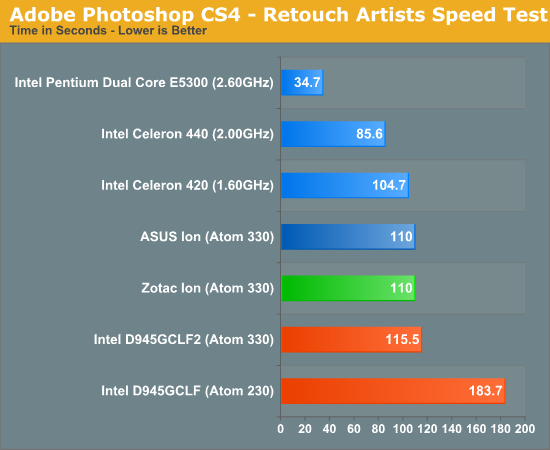
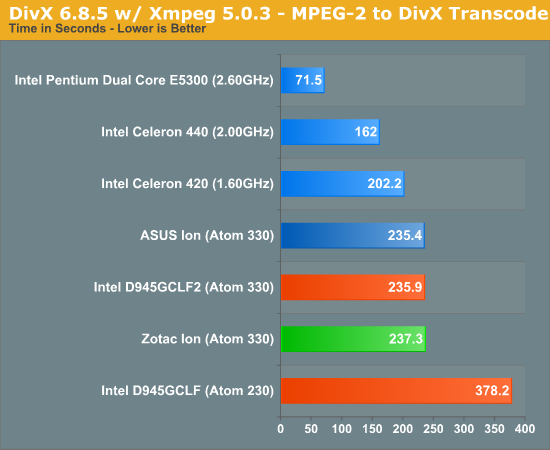
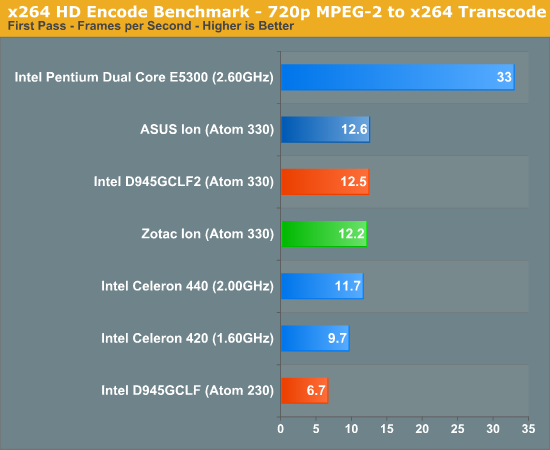
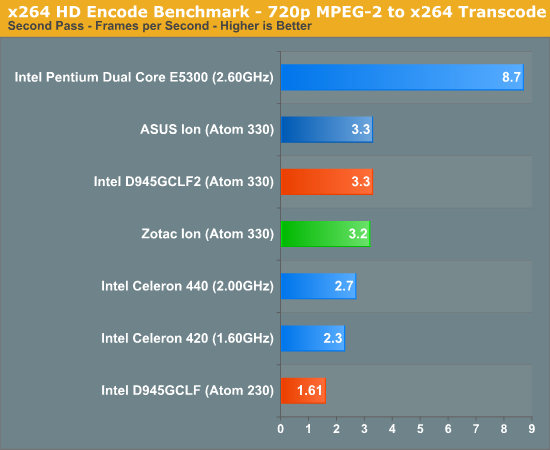
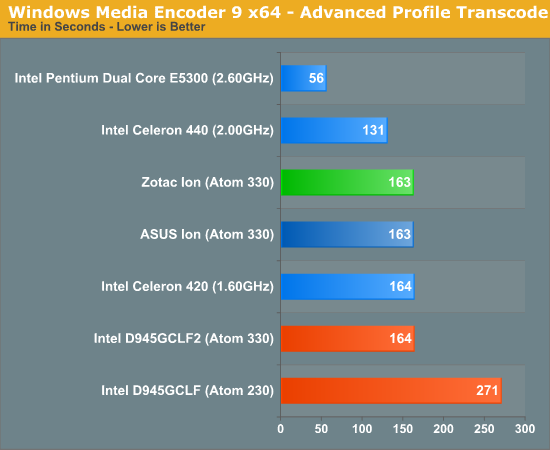
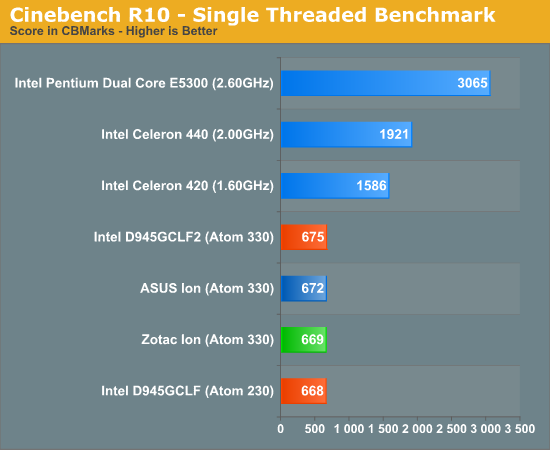

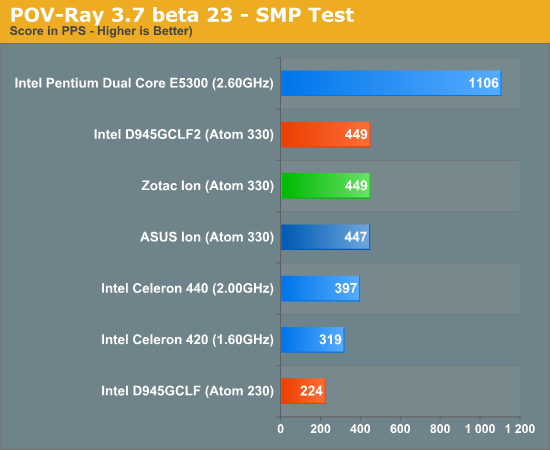
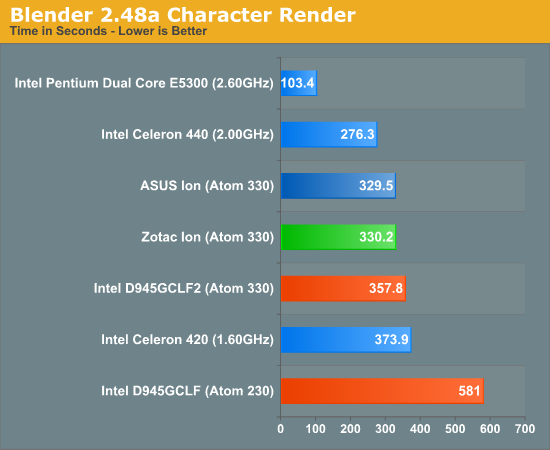
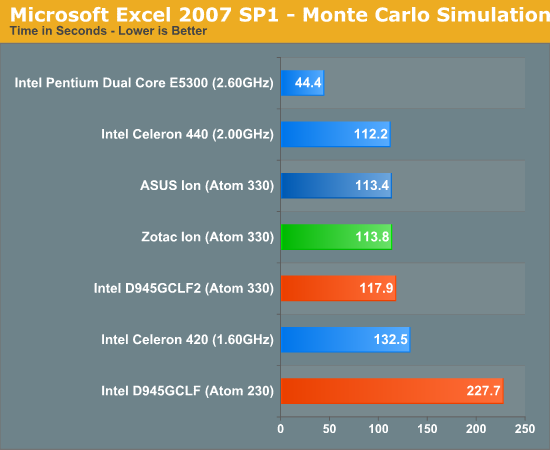
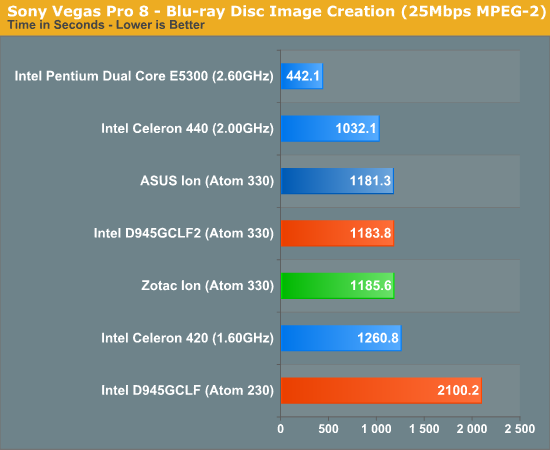

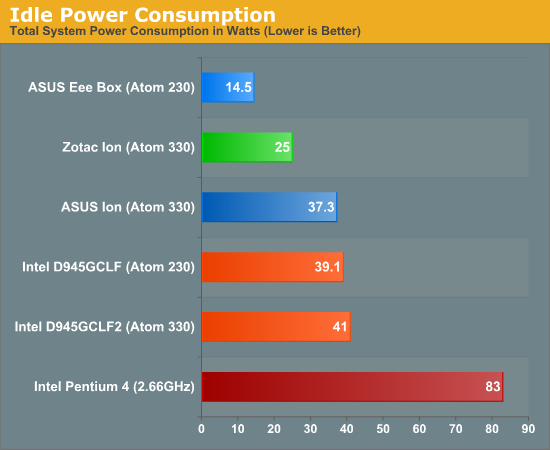
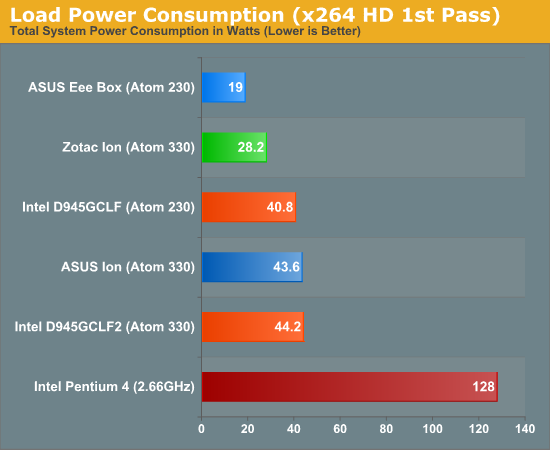
Gaming and CUDA Performance
I already went through this in the Zotac review, allow me to quote:
The gaming performance of Intel’s basic Atom platform is a joke. I’ll put aside debates of whether or not you would want to game on an Atom for a moment. World of Warcraft does a great job of straddling the line between casual and hardcore gaming and thus makes a good candidate for looking at gaming performance of Ion vs. Intel’s standard Atom platform.
I tested by running through a small outdoor section at 800 x 600 (24-bit color, no AA) using WoW’s built in “Good” visual quality settings. This is the same chart from the Pentium 4 section but I'm repeating it here so you have something to look at while we discuss the gaming potential of Ion:
The Ion platform managed just under 18 fps, which wasn’t incredibly smooth to play on but it was close. If I dropped the settings even lower I could easily get a smooth experience. The Intel D945GCLF2 managed a whopping 3 fps. I didn’t even bother benchmarking the single core version; I’m not that fond of single digits.
Most modern FPS games will show worse performance than what we just saw under WoW. Far Cry 2 and Crysis Warhead will give you under 7 fps for Zotac’s Ion platform, but other, more mainstream titles will perform similarly if not better.
I still maintain that the Atom CPU is not fast enough for a good gaming experience on far too many modern titles, but to NVIDIA’s credit, the Ion platform does make it fast enough in games that it otherwise wouldn’t be.
CUDA performance is a bit similar. The GPU can definitely help Atom in some situations if there's proper support, but don't expect to really ever make an Ion "fast" by today's standards. Gary had a particularly great experience with transcoding using Cyberlink's Media Espresso. Using one of our standard transcoding test files Gary made a high quality YouTube video with just the Atom 330 CPU in 405 seconds. Turning on GPU acceleration dropped the time to 261 seconds.
Overclocking the CPU to 2GHz brought the encode time down to 318 seconds; doing the same to the GPU (600MHz core, 1.4GHz shader clock) and turning on CUDA support brought the total time down to 203 seconds.


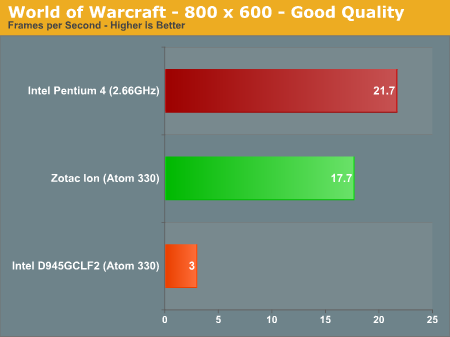








61 Comments
View All Comments
Titanius - Friday, August 28, 2009 - link
"While Acer offers the Aspire Revo, it only comes with a single-core Atom 230, a far less desirable option."What about the Acer Aspire Revo R3600? It has an Intel Atom 330, a 160GB HD and 2 GB of Dual-Channel RAM. Check it out: http://www.ncix.com/products/index.php?sku=41924&a...">http://www.ncix.com/products/index.php?...&man...
Fietsventje - Friday, August 28, 2009 - link
A pitty, no network interface benchmarks. Despite the overkill of the nVidia GPU, these boards would make the ideal start of a limited home server, and transferring files at gigabit speeds is no small feat for such a small processor ...mgrier - Friday, August 28, 2009 - link
Do you have data to support this? Between DMA both to the drive and the NIC and TCP checksum offloading, the CPU overhead of disk transfers should be minimal with an operating system and drivers that support all of the above. Assuming a single drive configuration, you should mostly be limited by transfer rate of the drive for large files. For smaller files, you should be limited by the drive's seek latency.JarredWalton - Saturday, August 29, 2009 - link
I'm not so sure it's the HDD CPU overhead so much as network drivers. I'd imaging these Atom CPUs could use a good 30-50% of the CPU for doing Gb transfers. However, as you are limited by the HDD to a maximum ~50MBps (unless you go SSD or at least a 7200RPM drive), you should probably only need 15-25% of the CPU. Would be interesting to see the results though. At least the Ion systems give you GbE, unlike all the netbooks I've tested.cliffman - Friday, August 28, 2009 - link
I am interested in seeing the performance of a mini-itx board that can support a quad core system. You can build a modern system for $500 instead of paying $350 for an atom system.MadMan007 - Sunday, August 30, 2009 - link
Considering those use any one of the regular LGA775 (atm - maybe we'll see some LGA1156 mITX boards) chipsets unless the board is just done poorly the performance would be the same as a full system with the same chipset and CPU. You'd just have the obvious tradeoff of expansion and possibly overclocking/enthusiast features.plext0r - Friday, August 28, 2009 - link
You mention the Acer Aspire Revo on the last page. Any word when and if Acer will release this box in the US? A single-core 230 is plenty of CPU horsepower for XBMC or MythTV when using Nvidia's binary drivers. Thanks!strikeback03 - Friday, August 28, 2009 - link
Hey, finally an Atom board with analog connections for more channels. Maybe I'll eventually replace the LF2 board in my carputer with this (and just keep the Scythe fan I already have).gipper - Friday, August 28, 2009 - link
Why in the world can't people just use bigger fixtures and bigger fans?It's like the xbox 360. Who cares if it's smaller than my receiver, it's A FREAKING JET ENGINE. Why can't they just bump the size up a bit and throw in a 120mm fan?
With these, what's wrong with bumping up the chasis to xbox1 size and going with a slower 80mm fan which will probably deliver more air flow at 800rpm than these 40mm fans at 6500rpm.
I can't believe that project leaders haven't caught on to this issue yet. They must have their quality assurance guys working in different rooms than the products they're testing, or they're testing them in the middle of the factory.
Abby - Wednesday, September 2, 2009 - link
For Manufacturing, Transportation and profits wise, small is da key.